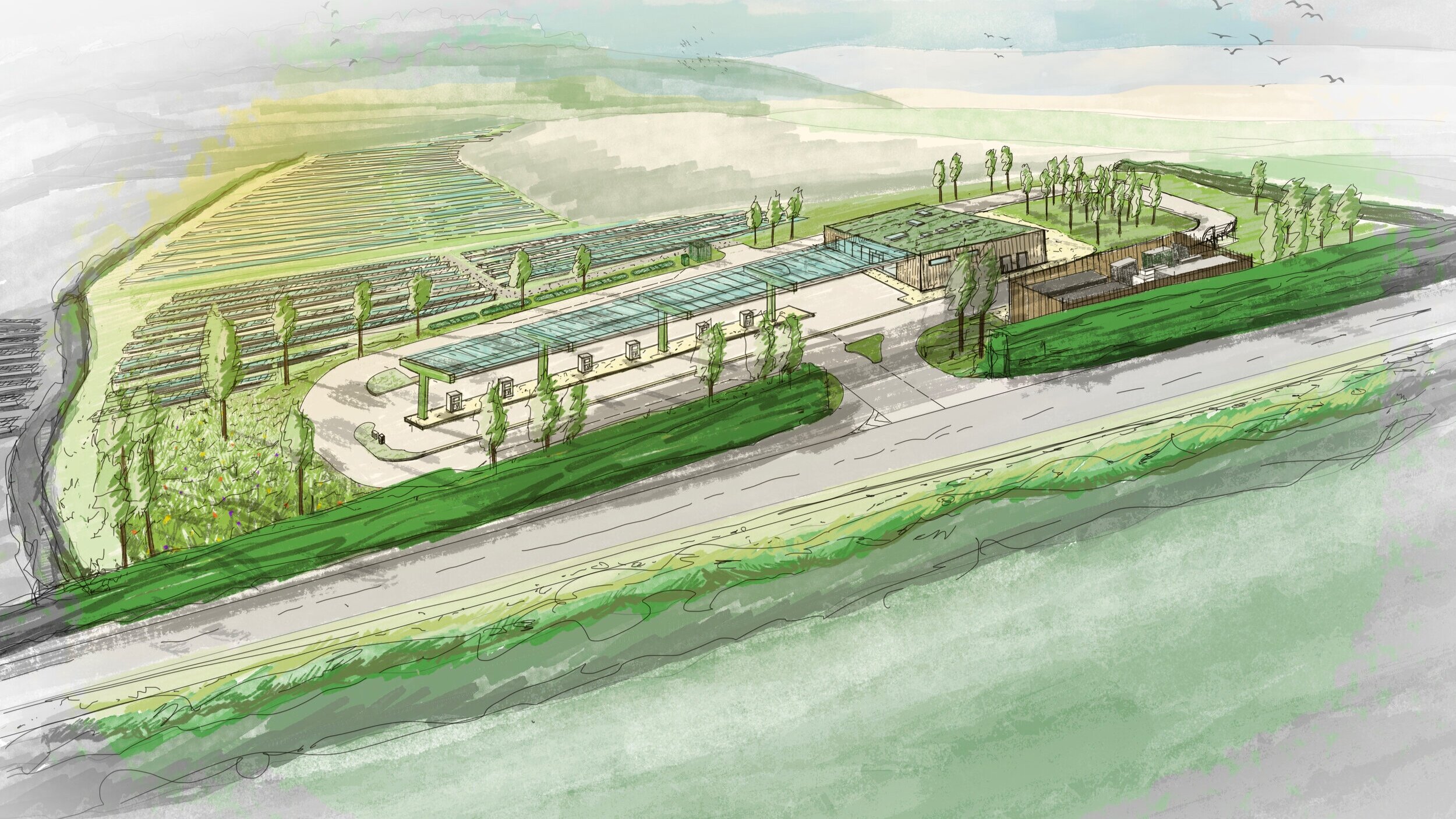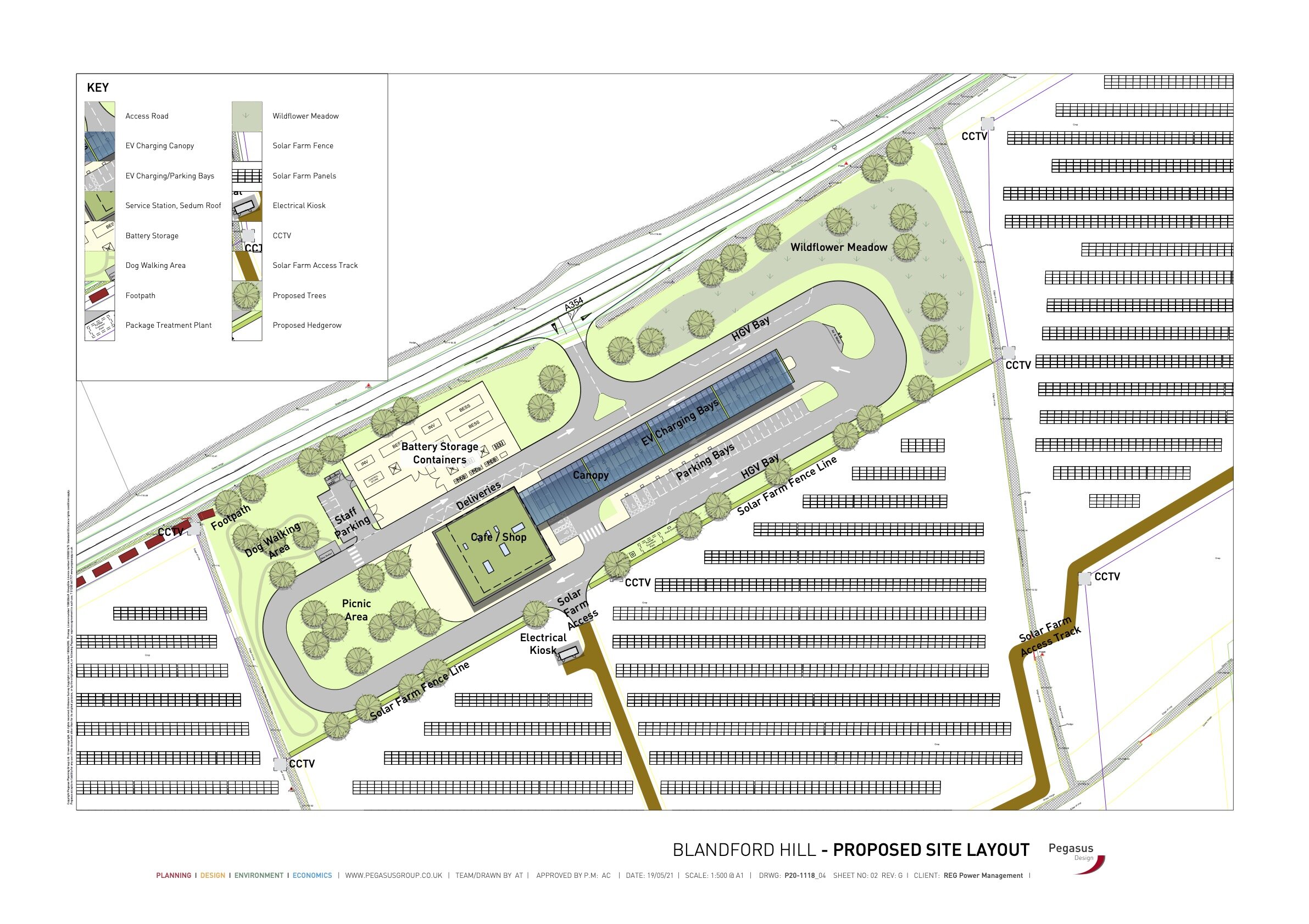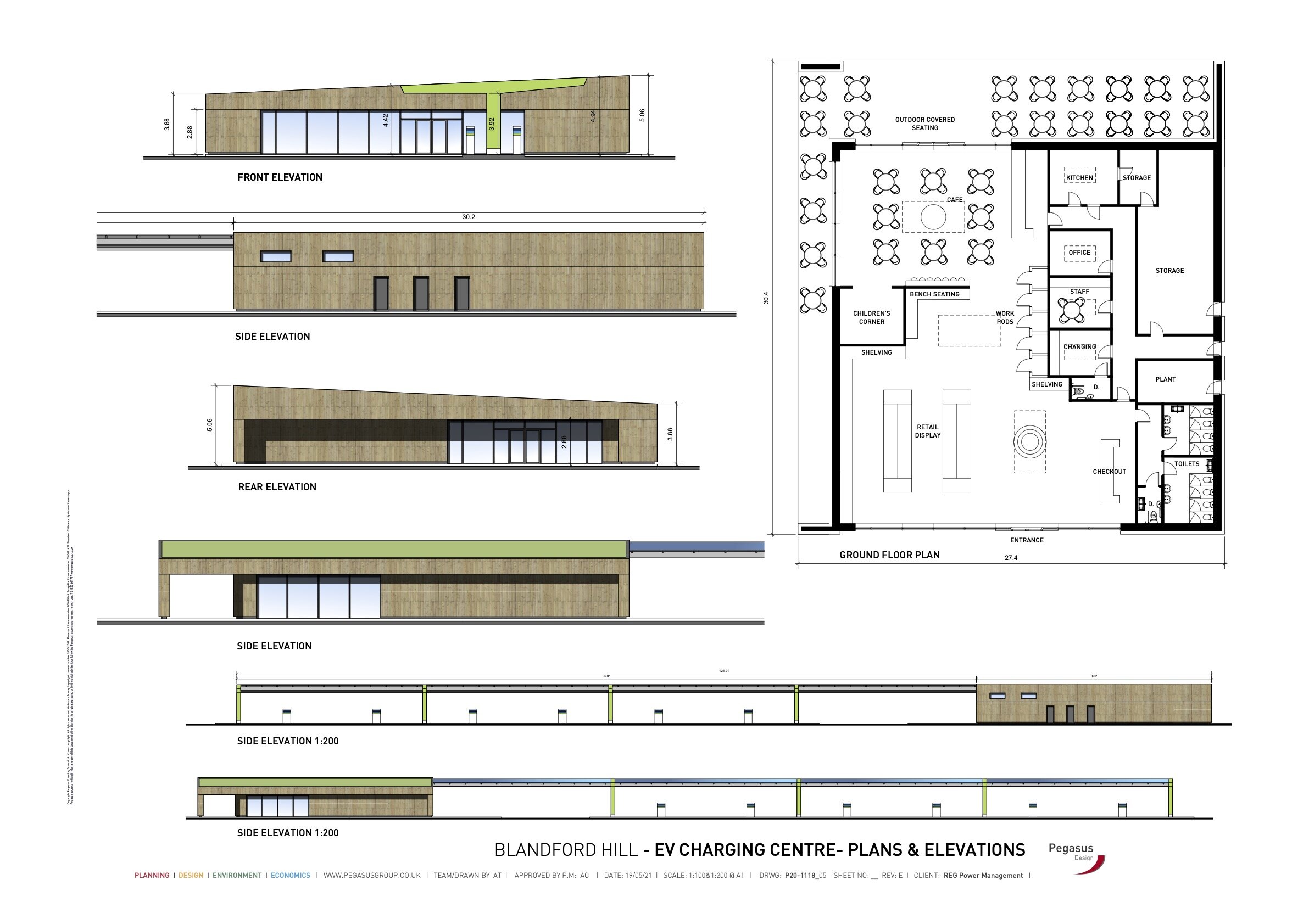
Blandford Hill Eco Hub Project
& Biophilic Design
The Blandford Hill Eco Hub is an exciting project focused on renewable energy and sustainability. The project consists of an electric vehicle (EV) charging station, a 15 megawatt ground-mounted solar farm, a 3 megawatt battery storage facility and a cafe/farm shop near Blandford in Dorset; see https://www.blandfordhillecohub.co.uk/
In collaboration with Naturalis Energy Developments Limited and Pegasus Group, Design Decoded was enlisted to provide biophilic design consultancy for the project. The aim of the engagement was twofold. Firstly, to introduce design concepts that are sympathetic to both the rural location and initial local community concerns regarding the scale and nature of the EV charging facility. Secondly, to provide inspiration and ideas to the tenant(s) of the proposed farm shop and café in particular with respect to the philosophy of biophilic design and emerging, post-pandemic patterns of living and working.
Sustainability and biophilic design offer so many benefits from both a commercial and consumer perspective for retail and office environments. Biophilic design boosts our indoor environmental quality and helps foster overall wellbeing for all who use the space.
The project design was meeting with some negative feedback initially due to the two storey design and lack of screening. Design Decoded’s input contributed to amendments to the overall building design, floorplans, vehicle exit routes, battery Storage, staff car parking and staff access along with deliveries and maintenance access. Other changes included adding outdoor spaces, a green roof, internal high level sloping ceiling, extensive natural lighting, soffit shading, natural building materials and enhanced planting both inside and out!
By making changes to the vehicle exit routes, a large landscaped and planted outdoor seating area adjacent to the cafe for staff and visitors could be provided. The re-design also mitigated potential pedestrian safety implications and enabled the relocation of the battery storage area where screening could be implemented more effectively. In addition, the re-location of the staff car parking area facilitated safer access for staff and maintenance personnel.
Further amends were made to improve the space and flow within the farm shop and cafe. A second staff access to the farm shop area was added to prevent a potential ‘bottle neck’ at the cafe staff entrance which could also cause safety issues with constant access to and from the kitchens to the cafe during busy times.
Design Decoded’s recommended amendments and considerations were factored into the revised plans which subsequently gained planning permission!


Commercial & Retail Benefits of Biophilic Design
In commercial and retail spaces biophilic design is one of the most powerful methods of improving customer experience.
Exposure to daylight fosters positive emotions in customers
Natural light has a range of benefits for humans: improved mood, better sleep, metabolic regulation, and much more. One of the most powerful effects of daylight is the creation of positive emotions. Many studies have proven that exposure to natural light releases serotonin in the brain, which in turn improves mood. In general, the more natural light a person is exposed to, the happier they will be.
Customers who are exposed to natural light while in a retail environment will perceive their experience more positively than they would if the space lacked daylight. This effect can be amplified by including other biophilic elements like reclaimed wood, which has been shown to reduce stress and increase social interactions. When multiple biophilic elements are working together, customers will feel more empowered to relax, take their time, and shop around.
Biophilic elements can increase product value and overall sales
The use of daylight and other biophilic elements does much more than create positive emotions. Believe it or not, biophilia can actually increase the perceived value of products and boost overall sales. When customers are shopping in a space that utilizes biophilic elements, the positive emotions they experience will translate into receptiveness. This happens because customers associate visually appealing biophilic spaces with higher quality and thus higher product value.
Biophilic elements can also foster comfort and calmness, which are becoming increasing important as part of the customer experience. These elements are especially important in more industrial or minimalist spaces, as softer, more comfortable materials and spaces help to balance and complement these types of aesthetics.
Indoor environmental quality gets a boost from biophilia
Biophilic design improves indoor environmental quality (IEQ), making it healthier for both employees and customers. To holistically improve IEQ, multiple biophilic elements should be present. Greenery helps to purify the air; daylight works to maintain and satisfy human circadian rhythms; and materials like wood contribute to stress reduction. In concert, these various elements maximize wellness, making the indoors a pleasant place to be.
Focusing on enhancing IEQ is an important step in perfecting a retail space. It’s a worthy endeavour to reduce the number of contaminants and pollutants customers come into contact with. First, the introduction of plant life combined with air filtration will ensure the air is clean. Second, choosing materials with low concentrations of volatile organic compounds (VOCs) will further minimise toxins. VOCs are often present in paints, wood preservatives, cleaners, carpets, and other building materials. Ideally, a retail space should have the lowest number of VOCs possible, since a large number of people will come into contact with the space every day. Opting for green building materials like reclaimed wood and selecting low-VOC materials will help manage the presence of these compounds.
The current essential need for biophilia
With the incorporation of separating strategies such as social distancing, the post pandemic retail environment will need to adapt. It has become even more essential than ever to foster a sense of security and support people’s holistic wellbeing - regardless of project scope. As we are all experiencing an immense state of flux, it is paramount that we integrate the benefits of our natural environments into our built ones. These natural elements foster a sense of warmth, calmness and comfort ultimately helping to improve our overall wellbeing.
